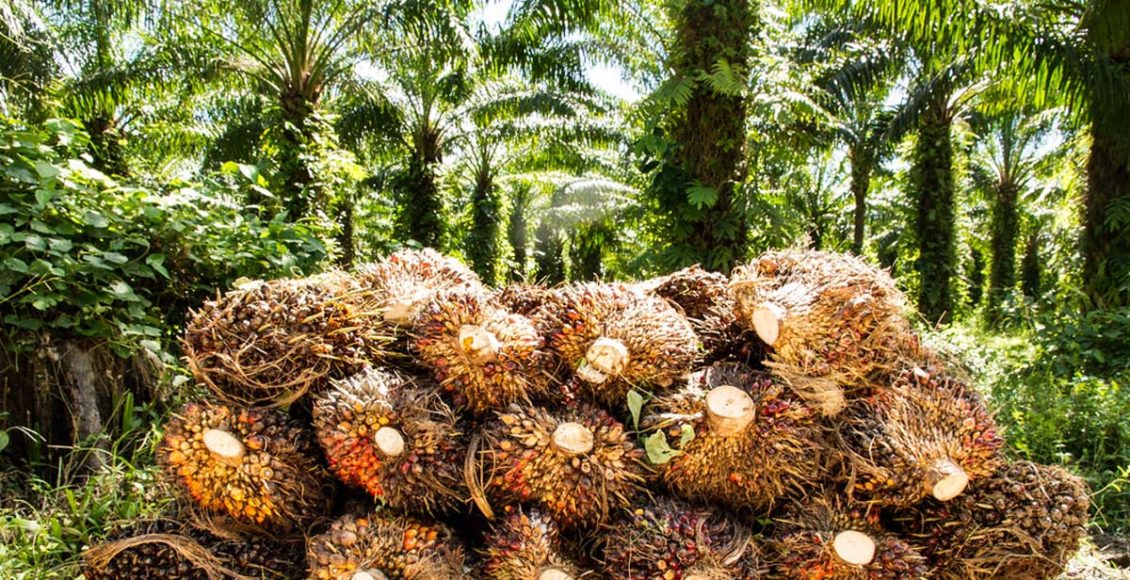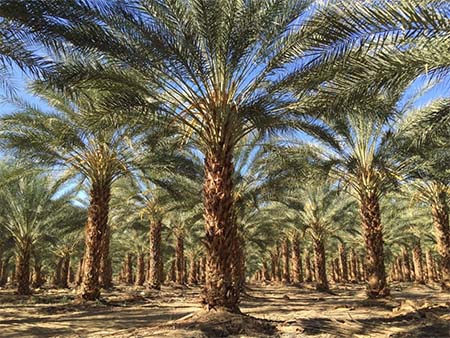
Oil palm in sustainable cropping system holds promise for India
India in 2018 imported nearly 15 million tons of edible oils which is nearly 68% of annual consumption demand of about 22 million tons. Of the total imports of edible oil, nearly 60% constitutes palm oil. The consumption for palm oil has increased by about 230% in last 2 decades from 3 million tons in 2001 to nearly 10 million tons now. Despite this increased requirement, India is still importing nearly 70% of the palm oil demand. Government has spent nearly 70,000 crores in 2018-2019 for import of palm oil.
Palm oil is used as the most common cooking medium and in various forms, from chips and instant noodles to toothpastes, lotions, lipsticks and other personal care items and cosmetics. It is preferred over other edible oils by price-sensitive consumers as the palm oil price is generally 20% lower than other vegetable oils. This is due to productivity gains attained by major oil palm producing countries like Indonesia and Malaysia that account for over 82% of world oil palm cultivation. The other reason for less price of palm oil is its lower preference by high-income consumers in countries like US and Europe that prefer olive oil, canola and soy oil etc.
Oil palm, Elaeis guineensis, is the highest oil yielding crop among vegetable oil yielding crops. With good planting material, irrigation, and proper management, oil palm has the potential to produce 20-25 MT fresh fruit bunches (FFB) per hectare after attaining the age of 5 years. This, in turn, can yield 4-5 MT of palm oil and 0.4-0.5 MT palm kernel oil (PKO) which is about 4.5 times the yield of other traditional oilseeds. In India, 4 million MT of traditional oils is being produced in 15.8 million hectares of land whereas the same quantity of palm oil can be produced in just 1 million hectares. Currently, the country has only about 3.3 lakh hectares under oil palm, while the potential identified for it is 19.3 lakh hectares in the states of Andhra Pradesh, Arunachal Pradesh, Assam, Chhattisgarh, Karnataka, Kerala, Mizoram, Odisha, Tamil Nadu, and the other North East States by Department of Agriculture, Cooperation and Farmers Welfare (DAC& FW). Andhra Pradesh is the major Oil Palm growing state in India with more than two lakh farmers involved in Oil Palm cultivation while two lakh more farmers are estimated to cultivate the crop in other parts of the country. The crop has an economic life span of 30 years, comprising three distinct phases viz. juvenile period (1-3 years), stabilizing period (4-8 years) and stabilized period (9-30 years). The major constraints which hinders the expansion of oil palm cultivation in India is the long gestation period of at least 3 years, erratic monsoon leading to shortage of water, high cost of irrigation, fluctuation in prices of Crude Palm Oil in the international market, competition from other economically viable crops such as rubber, arecanut, sugarcane, banana, coconut etc. and variation in import duty on edible oils. Another constraint is the uncertainty in prices of FFBs. Based on the global palm oil market and the oil content of the crop in a particular oil palm growing zone, the state government decides the rate of FFBs every month. But market trends show prices have risen and fallen by up to 50 % over the past 15 years. These challenges needs to be addressed for oil palm growth keeping in mind its advantages and reducing dependence on heavy imports.
Indian Government has taken several initiatives to promote oil palm cultivation since 90’s. Technology Mission on Oilseeds & Pulses was taken up by DAC&FW in 1991-92 in potential states. During Eight and Ninth five-year plans, centrally sponsored scheme, Oil Palm Development Programme (OPDP) was taken up. During Tenth and Eleventh 5-year Plan, Government of India (GoI) provided support for oil palm cultivation under Integrated Scheme of Oilseeds, Pulses, Oil Palm and Maize (ISOPOM). Further to boost oil palm cultivation, GoI had supported a Special Programme on Oil Palm Area Expansion (OPAE) under Rashtriya Krishi Vikas Yojana during the year 2011-12 with an objective to bring 60,000 ha area under Oil Palm cultivation, which continued till March, 2014. During the Twelfth 5-year Plan, National Mission on Oilseeds and Oil Palm (NMOOP) was launched in which Mini Mission-II (MM-II) is dedicated to oil palm area expansion and productivity enhancements. Under this mission, farmers were provided training, subsidized planting materials and input assistance. GoI has also provided financial support for establishment of oil palm processing mill especially in NE/LW areas/hilly states/regions. So far 24 oil palm processing mills have been established in different states with the capacity of 312 MT/hrs for crushing of FFBs. State Governments have also engaged about 15 private entrepreneurs of which M/s Godrej Agrovet Pvt. Ltd., M/s Ruchi Soya Industries, M/s Food, Fats & Fertilizers and M/s Shivasais Oil Palm Ltd are the major ones for developing oil palm seedling nurseries and processing mills in different States. These companies have signed Memorandum of Understanding (MoU) with the State Governments who in turn have allotted lands in Mandals/Districts to the companies for new plantations. The companies have established nurseries in their allotted zone for developing seed gardens of oil palm from seed sprouts of indigenous as well as of exotic origin. They also extend technical support to the farmers for development of oil palm plantations. Though these initiatives begin with lot of enthusiasm but government has failed to maintain the trend of increasing area under cultivation. To further improve food security and reduce our imports, in April 2017, government decided to remove all land ceilings for the cultivation of palm oil for companies with the additional benefits of 100% FDI, to lure bigger players to “Make in India”. Government is now focusing especially on North Eastern region for growth of oil palm cultivation. Need based support is being provided to Indian Institute of Oil Palm Research, Andhra Pradesh for maintenance of existing seed gardens, research & development projects and to strengthen the training infrastructure for oil palm growers/officials etc. under NMOOP. At present more than 70% of total planting material requirement are being met through imports from Indonesia, Costa Rica and Malaysia, Thailand and Ivory Coast.
Technology Mission on Oilseeds & Pulses was taken up by DAC&FW in 1991-92 in potential states. During Eight and Ninth five-year plans, centrally sponsored scheme, Oil Palm Development Programme (OPDP) was taken up. During Tenth and Eleventh 5-year Plan, Government of India (GoI) provided support for oil palm cultivation under Integrated Scheme of Oilseeds, Pulses, Oil Palm and Maize (ISOPOM). Further to boost oil palm cultivation, GoI had supported a Special Programme on Oil Palm Area Expansion (OPAE) under Rashtriya Krishi Vikas Yojana during the year 2011-12 with an objective to bring 60,000 ha area under Oil Palm cultivation, which continued till March, 2014. During the Twelfth 5-year Plan, National Mission on Oilseeds and Oil Palm (NMOOP) was launched in which Mini Mission-II (MM-II) is dedicated to oil palm area expansion and productivity enhancements. Under this mission, farmers were provided training, subsidized planting materials and input assistance. GoI has also provided financial support for establishment of oil palm processing mill especially in NE/LW areas/hilly states/regions. So far 24 oil palm processing mills have been established in different states with the capacity of 312 MT/hrs for crushing of FFBs. State Governments have also engaged about 15 private entrepreneurs of which M/s Godrej Agrovet Pvt. Ltd., M/s Ruchi Soya Industries, M/s Food, Fats & Fertilizers and M/s Shivasais Oil Palm Ltd are the major ones for developing oil palm seedling nurseries and processing mills in different States. These companies have signed Memorandum of Understanding (MoU) with the State Governments who in turn have allotted lands in Mandals/Districts to the companies for new plantations. The companies have established nurseries in their allotted zone for developing seed gardens of oil palm from seed sprouts of indigenous as well as of exotic origin. They also extend technical support to the farmers for development of oil palm plantations. Though these initiatives begin with lot of enthusiasm but government has failed to maintain the trend of increasing area under cultivation. To further improve food security and reduce our imports, in April 2017, government decided to remove all land ceilings for the cultivation of palm oil for companies with the additional benefits of 100% FDI, to lure bigger players to “Make in India”. Government is now focusing especially on North Eastern region for growth of oil palm cultivation. Need based support is being provided to Indian Institute of Oil Palm Research, Andhra Pradesh for maintenance of existing seed gardens, research & development projects and to strengthen the training infrastructure for oil palm growers/officials etc. under NMOOP. At present more than 70% of total planting material requirement are being met through imports from Indonesia, Costa Rica and Malaysia, Thailand and Ivory Coast.
While there is argument of reducing imports and improving food security, increase in oil palm cultivation threatens the ecological balance. Oil palm plantations threaten water quality changing freshwater ecosystems for decades, lowering the water table, which can lead to increasing concentrations of arsenic in drinking water, and adding salinity to coastal freshwater. Oil palms take up to 80 gallons per tree, per day. The lesson to learn from Indonesia and Malaysia is the extent of deforestation that has happened to increase the area under oil palm cultivation. One of the solution is to grow oil palm sustainably which some of the companies like Singapore -based Musim Mas, Golden AgriResources (GAR), Wilmar International; American agribusiness firm Cargill, and Indonesian grower Asian Agri are adopting. The requirements of cultivating oil palm keeping in mind the ecological balance are reflected in the industry’s most comprehensive way to identify sustainable palm oil: the Roundtable on Sustainable Palm Oil’s (RSPO) certification system. The RSPO standards consist of eight principles and more than 40 criteria that growers need to fulfil to prove adherence to the resources and best practices to grow oil palm. Currently, RSPO certification is non-existent in India with only 49 members having certification.
India can now either continue its imports or increase the oil palm cultivation to reduce heavy dependence on imports and enable food security by threating ecological balance or find a way to grow oil palm sustainably.
Author

Connect with Author at: E-mail agribusiness@sathguru.com
 Grow Beyond
Grow Beyond 

